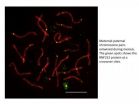(Press-News.org) New Rochelle, NY, February 13, 2013—When Pope Benedict XVI ends his reign at the end of February he will be the first pope to do so before his death in nearly 600 years. He shocked the Catholic Church by announcing his resignation and set in place a centuries-old process to select his successor. The fascinating Conclaves system for electing a new pope, which has been in place since the late 1200s is described in "Creating the Rules of the Modern Papal Election," published in Election Law Journal, from Mary Ann Liebert, Inc., publishers. The article is available on the Election Law Journal website.
Frederic J. Baumgartner, PhD, Professor of History, Virginia Polytechnic Institute and State University, provides a comprehensive accounting of the early methods used to select a pope and the events leading up to the first Conclave. He traces the arcane rules developed to guide the papal election process and notes that, "The system that has been in place has served the papacy well since the end of the Great Schism. There has not been a serious challenge to the legitimacy of any pope since Martin V was elected in 1417. No other system of governance comes close to matching that record."
Daniel Tokaji, Co-Editor of Election Law Journal and Robert M. Duncan/Jones Day Designated Professor of Law, The Ohio State University, Moritz College of Law, states: "The resignation of Pope Benedict XVI brings into the public spotlight the longest-standing system for conducting elections for the head of any institution on earth. Professor Baumgartner's article offers a lively and accessible summary of the development of the rules for papal elections, a must read for anyone interested in this important topic."
INFORMATION:
About the Journal
Election Law Journal is the authoritative peer-reviewed journal on election law, policy, and administration. It is published quarterly in print and online by Mary Ann Liebert, Inc., publishers. Led by Co-Editors Paul Gronke of Reed College and Daniel P. Tokaji of The Ohio State University, the Journal covers the field of election law for practicing attorneys, election administrators, political professionals, legal scholars, and social scientists, and covers election design and reform on the federal, state, and local levels in the U.S. and in 75 countries around the world. Complete tables of content and a free sample issue may be viewed on the Election Law Journal website.
About the Publisher
Mary Ann Liebert, Inc., publishers is a privately held, fully integrated media company known for establishing authoritative medical and biomedical peer-reviewed journals, including Metabolic Syndrome and Related Disorders, Population Health Management, Diabetes Technology & Therapeutics, and Journal of Women's Health. Its biotechnology trade magazine, Genetic Engineering & Biotechnology News (GEN), was the first in its field and is today the industry's most widely read publication worldwide. A complete list of the firm's 70 journals, newsmagazines, and books is available on the Mary Ann Liebert, Inc., publishers website at http://www.liebertpub.com.
Mary Ann Liebert, Inc. 140 Huguenot Street, New Rochelle, NY 10801-5215 www.liebertpub.com
Phone (914) 740-2100 (800) M-LIEBERT Fax (914) 740-2101
Resignation of Pope Benedict XVI demands a close look at rules of modern papal election
2013-02-14
ELSE PRESS RELEASES FROM THIS DATE:
Why there are bad learners: EEG activity predicts learning success
2013-02-14
The reason why some people are worse at learning than others has been revealed by a research team from Berlin, Bochum, and Leipzig, operating within the framework of the Germany-wide network "Bernstein Focus State Dependencies of Learning". They have discovered that the main problem is not that learning processes are inefficient per se, but that the brain insufficiently processes the information to be learned. The scientists trained the subjects' sense of touch to be more sensitive. In subjects who responded well to the training, the EEG revealed characteristic changes ...
Genetic study pursues elusive goal: How many humpbacks existed before whaling?
2013-02-14
Scientists from Stanford University, the Wildlife Conservation Society, the American Museum of Natural History, and other organizations are closing in on the answer to an important conservation question: how many humpback whales once existed in the North Atlantic?
Building on previous genetic analyses to estimate the pre-whaling population of North Atlantic humpback whales, the research team has found that humpbacks used to exist in numbers of more than 100,000 individuals. The new, more accurate estimate is lower than previously calculated but still two to three times ...
Robots with lift
2013-02-14
They can already stand, walk, wriggle under obstacles, and change colors. Now researchers are adding a new skill to the soft robot arsenal: jumping.
Using small explosions produced by a mix of methane and oxygen, researchers at Harvard have designed a soft robot that can leap as much as a foot in the air. That ability to jump could one day prove critical in allowing the robots to avoid obstacles during search and rescue operations. The research is described in a Feb. 6 paper in the international edition of Angewandte Chemie.
"Initially, our soft robot systems used pneumatic ...
Study supports regulation of hospitals
2013-02-14
EAST LANSING, Mich. — Hospital beds tend to get used simply because they're available – not necessarily because they're needed, according to a first-of-its-kind study that supports continued regulation of new hospitals.
Michigan State University researchers examined all 1.1 million admissions at Michigan's 169 acute-care hospitals in 2010 and found a strong correlation between bed availability and use, even when accounting for myriad factors that may lead to hospitalization. These factors include nature of the ailment, health insurance coverage, access to primary care ...
Clues to chromosome crossovers
2013-02-14
Neil Hunter's laboratory in the UC Davis College of Biological Sciences has placed another piece in the puzzle of how sexual reproduction shuffles genes while making sure sperm and eggs get the right number of chromosomes.
The basis of sexual reproduction is that a fertilized egg gets half its chromosomes from each parent — sperm and eggs each contributing one partner in each pair of chromosomes. We humans have 23 pairs of 46 chromosomes: so our sperm or eggs have 23 chromosomes each.
Before we get to the sex part, though, those sperm and eggs have to be formed from ...
Preventing obesity transmission during pregnancy
2013-02-14
A much neglected part of the obesity epidemic is that it has resulted in more overweight/obese women before and during pregnancy. Their offspring also tend to have higher birth weights and more body fat, and carry an increased risk of obesity and chronic diseases later in life. However, the nutritional factors and mechanisms involved pre and during pregnancy that may influence child obesity remain uncertain. A recent publication by ILSI Europe identifies and discusses key contributing factors leading to obesity.
In an article recently published in Annals of Nutrition and ...
Probiotic-derived treatment offers new hope for premature babies
2013-02-14
BETHESDA, Md. (Feb. 13, 2013)—"Good" bacteria that live in our intestines have been linked with a variety of health benefits, from fighting disease to preventing obesity. In a new study, Kriston Ganguli of Massachusetts General Hospital for Children and Harvard Medical School and her colleagues have discovered another advantage to these friendly microscopic tenants: Chemicals secreted by good bacteria that typically live in the intestines of babies could reduce the frequency and severity of a common and often-lethal disease of premature infants.
This disease, known as ...
Marsh plants actively engineer their landscape
2013-02-14
DURHAM, NC -- Marsh plants, far from being passive wallflowers, are "secret gardeners" that actively engineer their landscape to increase their species' odds of survival, says a team of scientists from Duke University and the University of Padova in Italy.
Scientists have long believed that the distribution of plants within a marsh is a passive adaption in which species grow at different elevations because that's where conditions like soil aeration and salinity best meet their needs.
But this team found intertidal marsh plants in Italy's famed Venetian lagoon were ...
Cellular renewal process may underlie benefits of omega fatty acids
2013-02-14
A search for genes that change their levels of expression in response to nutrient deprivation has uncovered potential clues to the mechanism underlying the health benefits of omega fatty acids. In the Feb. 15 issue of Genes & Development, Massachusetts General Hospital (MGH) researchers describe finding that feeding omega-6 fatty acids to C. elegans roundworms or adding them to cultured human cells activates a cellular renewal process called autophagy, which may be deficient in several important diseases of aging. A process by which defective or worn-out cellular components ...
Vanderbilt study reveals clues to childhood respiratory virus
2013-02-14
New Vanderbilt-led research published in the Feb. 14 issue of the New England Journal of Medicine has identified the relatively unknown human metapneumovirus (MPV) as the second most common cause of severe bronchiolitis in young children.
Senior author John Williams , M.D., associate professor of Pediatric Infectious Diseases and a well-known expert in MPV research, said it is gratifying to offer a clearer picture of how this virus impacts children.
"We found MPV is as important a cause of respiratory illness as influenza, and caused more illness than the three common ...




